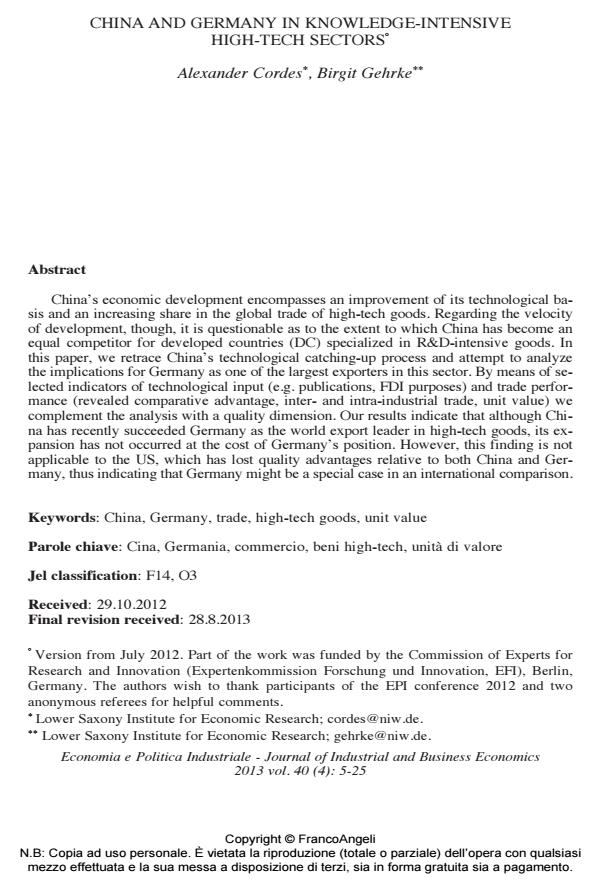China and Germany in knowledge-intensive high-tech sectors
Journal title ECONOMIA E POLITICA INDUSTRIALE
Author/s Alexander Cordes, Birgit Gehrke
Publishing Year 2014 Issue 2013/4
Language English Pages 21 P. 5-25 File size 318 KB
DOI 10.3280/POLI2013-004001
DOI is like a bar code for intellectual property: to have more infomation
click here
Below, you can see the article first page
If you want to buy this article in PDF format, you can do it, following the instructions to buy download credits

FrancoAngeli is member of Publishers International Linking Association, Inc (PILA), a not-for-profit association which run the CrossRef service enabling links to and from online scholarly content.
China’s economic development encompasses an improvement of its technological basis and an increasing share in the global trade of high-tech goods. Regarding the velocity of development, though, it is questionable as to the extent to which China has become an equal competitor for developed countries (DC) specialized in R&D-intensive goods. In this paper, we retrace China’s technological catching-up process and attempt to analyze the implications for Germany as one of the largest exporters in this sector. By means of selected indicators of technological input (e.g. publications, FDI purposes) and trade performance (revealed comparative advantage, inter- and intra-industrial trade, unit value) we complement the analysis with a quality dimension. Our results indicate that although China has recently succeeded Germany as the world export leader in high-tech goods, its expansion has not occurred at the cost of Germany’s position. However, this finding is not applicable to the US, which has lost quality advantages relative to both China and Germany, thus indicating that Germany might be a special case in an international comparison.
Keywords: China, Germany, trade, high-tech goods, unit value
Jel codes: F14, O3
Alexander Cordes, Birgit Gehrke, China and Germany in knowledge-intensive high-tech sectors in "ECONOMIA E POLITICA INDUSTRIALE " 4/2013, pp 5-25, DOI: 10.3280/POLI2013-004001